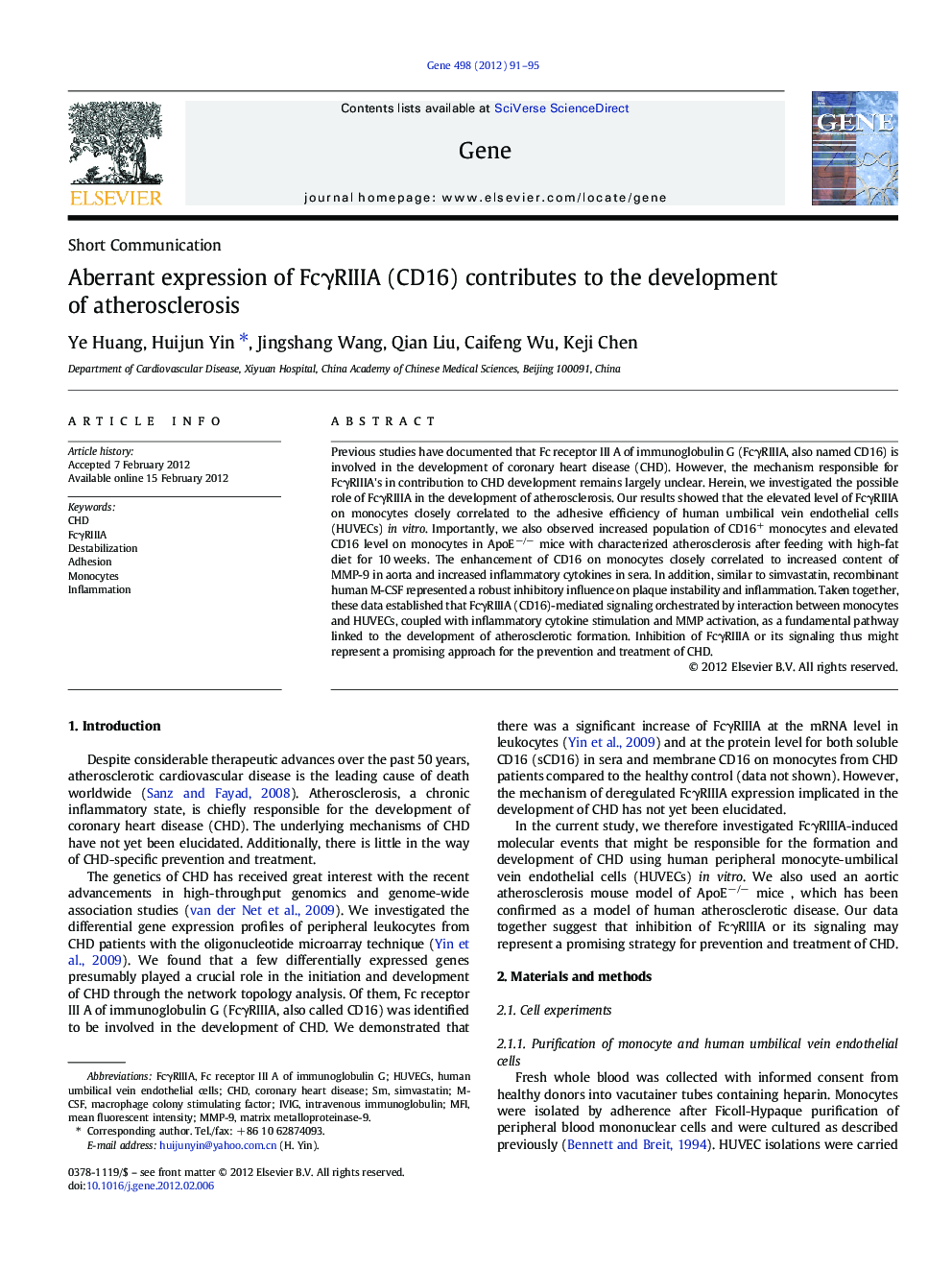| Article ID | Journal | Published Year | Pages | File Type |
|---|---|---|---|---|
| 2817954 | Gene | 2012 | 5 Pages |
Previous studies have documented that Fc receptor III A of immunoglobulin G (FcγRIIIA, also named CD16) is involved in the development of coronary heart disease (CHD). However, the mechanism responsible for FcγRIIIA's in contribution to CHD development remains largely unclear. Herein, we investigated the possible role of FcγRIIIA in the development of atherosclerosis. Our results showed that the elevated level of FcγRIIIA on monocytes closely correlated to the adhesive efficiency of human umbilical vein endothelial cells (HUVECs) in vitro. Importantly, we also observed increased population of CD16+ monocytes and elevated CD16 level on monocytes in ApoE−/− mice with characterized atherosclerosis after feeding with high-fat diet for 10 weeks. The enhancement of CD16 on monocytes closely correlated to increased content of MMP-9 in aorta and increased inflammatory cytokines in sera. In addition, similar to simvastatin, recombinant human M-CSF represented a robust inhibitory influence on plaque instability and inflammation. Taken together, these data established that FcγRIIIA (CD16)-mediated signaling orchestrated by interaction between monocytes and HUVECs, coupled with inflammatory cytokine stimulation and MMP activation, as a fundamental pathway linked to the development of atherosclerotic formation. Inhibition of FcγRIIIA or its signaling thus might represent a promising approach for the prevention and treatment of CHD.
► FcγRIIIA deregulation on monocytes correlates to the adhesion with HUVECs. ► Increased CD16 on monocytes in ApoE−/− mice with atherosclerosis. ► FcγRIIIA-mediated signaling is coupled with inflammation and MMP activation.
